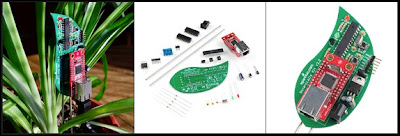Article first published as You are Looking at the Future - Called Graphene on Technorati.
Welcome. You are gazing upon a new substance, in it's infancy, called Graphene.
You might have heard the word Graphene before, but didn't really know what it was all about. Well, imagine future cell phones as thin and flexible as this. The iPad2 will look like a ganite slab compared to how thin devices with Graphene might be designed.
Before I explain graphene, and for you to understand the future we are headed into, we need to take a quick trip back in time to the last invention that changed our lives the way we know it. The transistor.
A little history: "In 1947, John Bardeen and Walter Brattain, working at Bell Telephone Laboratories, were trying to understand the nature of the electrons at the interface between a metal and a semiconductor. They realized that by making two point contacts very close to one another, they could make a three terminal device - the first "point contact" transistor. They quickly made a few of these transistors and connected them with some other components to make an audio amplifier. This audio amplifier was shown to chief executives at Bell Telephone Company, who were very impressed that it didn't need time to "warm up" (like the heaters in vacuum tube circuits). They immediately realized the power of this new technology.
This invention was the spark that ignited a huge research effort in solid state electronics. Bardeen and Brattain received the Nobel Prize in Physics, 1956, together with William Shockley, " for their researches on semiconductors and their discovery of the transistor effect." Shockley had developed a so-called junction transistor, which was built on thin slices of different types of semiconductor material pressed together. The junction transistor was easier to understand theoretically, and could be manufactured more reliably."
As you know, because of the transistor, it has paved the path for all variety of modern consumer electronics devices and computers. (Computers are just incredibly densely packed transistors on a single chip).
Back to the future: Graphene. So what IS graphene stuff? Quite literally, it is a sheet of carbon atoms, 1 molecule thick. It was first isolated by Professors Konstantin Novoselov and Andrew Geim and Manchester University in 2004 in England.
Imagine, for similarity, a sheet of seran wrap made of carbon atoms just 1 molecule thick. That sheet, in theory/principal, is so strong, you could put an elephant on top of a pencil, with the point of the pencil digging into the graphene sheet, and it wouldn't break. If you stacked 3 million sheets of graphene on top of each other, it would only be 1mm thick.
Graphene is seven times stronger than diamond, but it will stretch like rubber, it is nearly invisible, 200 times stronger than steel, and almost weightless, and unlike most everything else in nature, it is a truly 2 dimentional structure. This means it has unique properties, like it will conduct electricity better than anything we currently have available. Carbon is one of the most common substances in the world, so graphene will be extremely inexpensive to produce. This is in stark contrast to the high costs of processing silicon to make computer circuits.
Still having problems visualizing the future? You might want to watch this short YouTube video that shows a future device made of Graphene, and what it may be able to do.


















